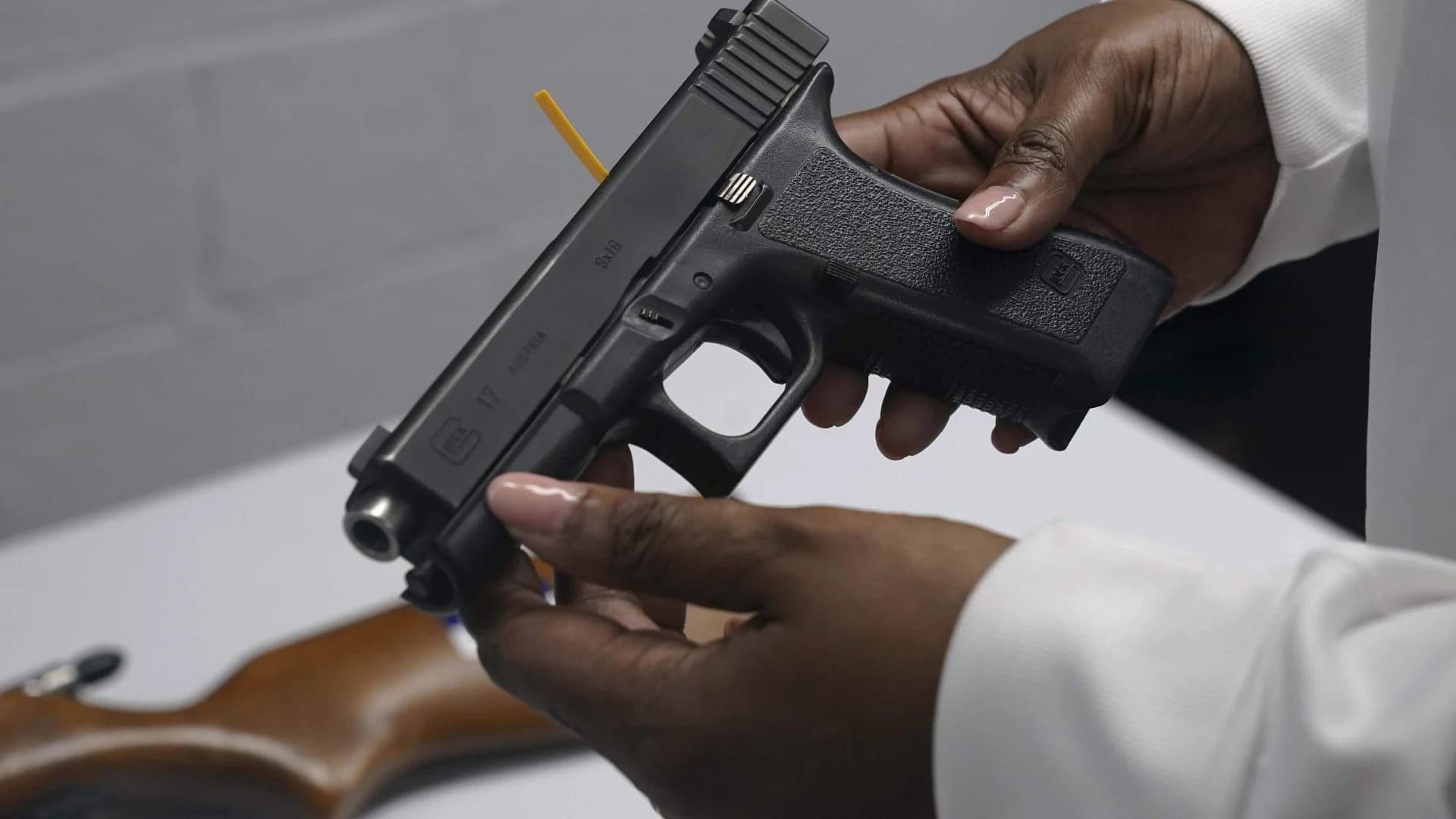More Stories

In a major expansion of gun rights, the Supreme Court said Thursday that Americans have a right to carry firearms in public for self-defense, a ruling likely to lead to more people legally armed in cities and beyond. The ruling came with recent mass shootings fresh in the nation’s mind and gun control being debated in Congress and states.
About a quarter of the U.S. population lives in states expected to be affected by the ruling, which struck down a New York gun law. The high court's first major gun decision in more than a decade came on a 6-3 split with the court's conservatives in the majority and liberals in dissent.
Meanwhile, across the street at the Capitol, Congress sped toward passage of its own gun legislation following the mass shootings in Texas, New York and California. Senators cleared the way for its measure, modest in scope but still the most far-reaching in decades.
Also Thursday, underscoring the nation's deep divisions over the issue, the sister of a 9-year-old girl killed in the Uvalde, Texas, school shootings, pleaded with state lawmakers in Austin to pass gun legislation, which would go against the Republican-controlled body's easing of restrictions in recent years.
President Joe Biden said in a statement he was “deeply disappointed” by the Supreme Court ruling, which he said "contradicts both common sense and the Constitution, and should deeply trouble us all.”
He urged states to pass new laws and said, “I call on Americans across the country to make their voices heard on gun safety. Lives are on the line.”
The court's decision struck down a New York law requiring people to demonstrate a particular need for carrying a gun in order to get a license to carry one in public. The justices said that requirement violates the Second Amendment right to “keep and bear arms.”
Justice Clarence Thomas wrote for the majority that the Constitution protects “an individual’s right to carry a handgun for self-defense outside the home.” That right is not a “second-class right," Thomas wrote. “We know of no other constitutional right that an individual may exercise only after demonstrating to government officers some special need.”
California, Hawaii, Maryland, Massachusetts, New Jersey and Rhode Island all have laws similar to New York's.
New York Gov. Kathy Hochul said the ruling comes at a particularly painful time, when New York is still mourning the deaths of 10 people in a mass shooting at a supermarket in Buffalo. “This decision isn’t just reckless. It’s reprehensible. It’s not what New Yorkers want,” she said.
But Tom King, president of the plaintiff New York State Rifle and Pistol Association, said he was relieved.
“The lawful and legal gun owner of New York State is no longer going to be persecuted by laws that have nothing to do with the safety of the people and will do nothing to make the people safer," he said. “And maybe now we’ll start going after criminals and perpetrators of these heinous acts.”
The court’s decision is somewhat out of step with public opinion. About half of voters in the 2020 presidential election said gun laws in the U.S. should be made more strict, according to AP VoteCast, an expansive survey of the electorate. An additional third said laws should be kept as they are, while only about 1 in 10 said gun laws should be less strict.
About 8 in 10 Democratic voters said gun laws should be made more strict, VoteCast showed. Among Republican voters, roughly half said laws should be kept as they are, while the remaining half closely divided between more and less strict.
In a court dissent joined by his liberal colleagues Thursday, Justice Stephen Breyer focused on the toll taken by gun violence. “Since the start of this year alone (2022), there have already been 277 reported mass shootings—an average of more than one per day,“ Breyer wrote.
Backers of New York’s law had argued that striking it down would lead to more guns on the streets and higher rates of violent crime. Gun violence, which was already on the rise during the coronavirus pandemic, has spiked anew.
In most of the country gun owners have little difficulty legally carrying their weapons in public. But that had been harder to do in New York and the handful of states with similar laws. New York’s law, which has been in place since 1913, says that to carry a concealed handgun in public, a person applying for a license has to show “proper cause,” a specific need to carry the weapon.
The state issues unrestricted licenses where a person can carry their gun anywhere and restricted licenses that allow a person to carry the weapon but just for specific purposes such as hunting and target shooting or to and from their place of business.
The challenge to the New York law was brought by the New York State Rifle & Pistol Association, which describes itself as the nation’s oldest firearms advocacy organization, and two men seeking an unrestricted ability to carry guns outside their homes.
The Supreme Court last issued a major gun decision in 2010. In that decision and a ruling from 2008, the justices established a nationwide right to keep a gun at home for self-defense. The question for the court this time was about carrying one outside the home. Thomas wrote in his opinion that: "Nothing in the Second Amendment’s text draws a home/public distinction with respect to the right to keep and bear arms."
More from News 12
0:52

Rep. McIver files appeal to dismiss federal assault charges
10:40

Power & Politics: Naughty and nice – political winners and losers of 2025
0:33

Porch pirates beware: Bill would make stealing packages a federal crime
2:22

Detainee's death at Delaney Hall prompts congressional visit to ICE facility
9:46

Gov. Murphy answers viewers' questions on ‘Ask Gov. Murphy’ program – Dec. 18, 2026
0:23
